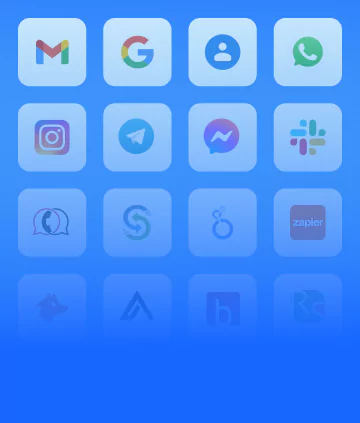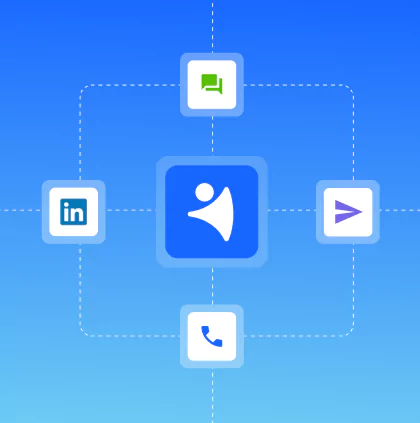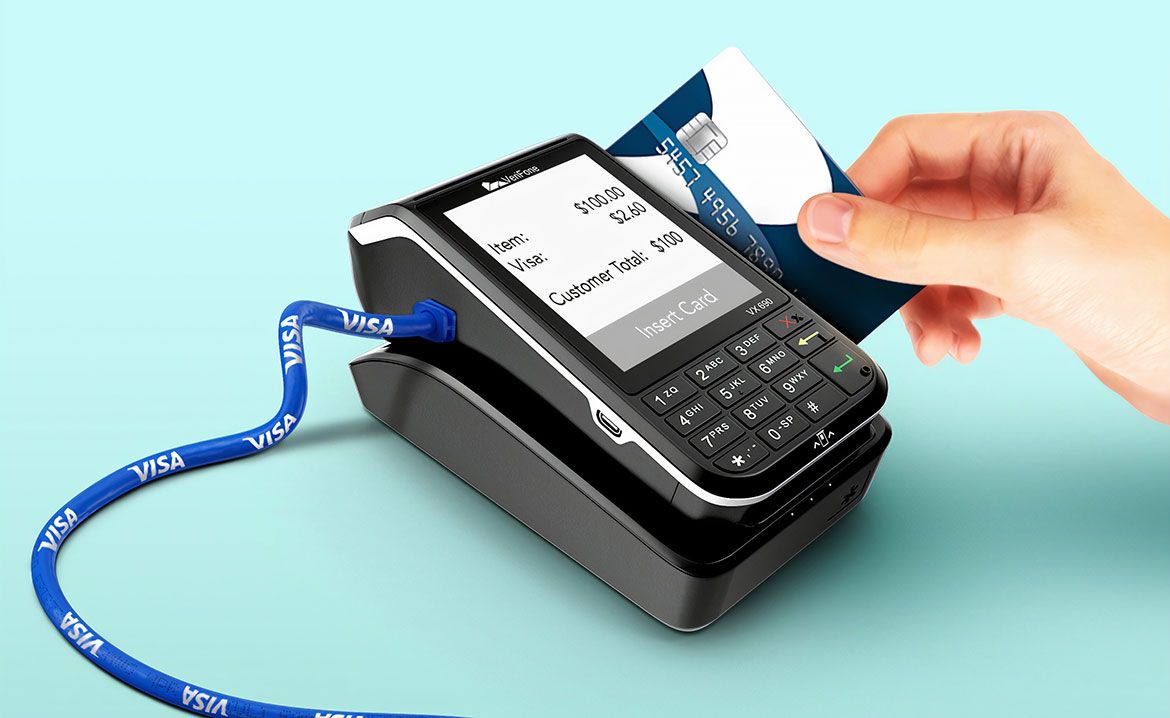A client forgot to pay? Here’s how to ask them for payment when the deadline has passed.
As a salesperson, getting paid on time is essential for maintaining a healthy commission and keeping your sales performance on track. However, clients may forget to pay, miss payment deadlines, or delay payments for various reasons. That's why knowing how to write a reminder email for payment is crucial for you to maximize your earnings and maintain a positive relationship with your clients.
Fresh off the back of following up with a client after a quotation, NetHunt are here to address those niggly little jobs; the ones that make us cringe because it feels like we’re being a pain in the arse; the ones that if we get it wrong, we can lose a lot of face.
This article outlines the tools and templates we need to ask a client for payment when their deadline has passed. It’s split into four sections.
This is how to remind a client to pay you after their invoice deadline has passed.
Automate client-payment reminders with NetHunt CRM
Workflows by NetHunt CRM is an automatic workflow builder. It helps your sales, marketing, and support teams to automate those nitty-gritty jobs. Automatically remind your customers to pay their invoice; remind your sales reps to ask, there’s no complicated coding required.
All you need is a NetHunt CRM subscription, a good knowledge of your business workflows, and a customer that needs reminding to pay their outstanding invoice!
It looks complicated, but it’s not. It only took my tiny copywriter mind half an hour to whip up. Our workflow starts when a sales rep has completed a deal, and they move that deal into the Waiting for payment stage on our pipeline. From there, our workflow splits into three branches: Payment received, Waiting for payment, and Payment missed.
When we’re waiting for our payment, we send a reminder to the client seven days before it’s due. At the same time, the relevant rep is reminded that this client needs to pay. The same happens again three days late - now we know our client definitely knows that they need to pay. On the day of the payment, we remind our client that their payment is due.
A day after the payment was due, we remind our sales rep via the Tasks feature that they need to follow up on that payment. It’s in their hands now.
When to send a reminder email for payment
Sending a reminder email for payment is a delicate matter. You don't want to come off as pushy or aggressive, but you also can't afford to let the payment slip through the cracks. Here are some general guidelines for when to send a payment reminder email:
- First Reminder: Send a gentle reminder a few days after the payment due date. The tone of this email should be friendly and assume the best intentions from the client. You can use this email to check-in with the client and see if there are any issues with the payment.
- Second Reminder: If you haven't received payment after the first reminder, it's time to send a slightly more assertive email. This email should remind the client of the payment due date, mention any late fees or penalties, and offer help or assistance if there are any issues. You can also consider calling the client or sending a physical letter as a follow-up to the second reminder.
- Final Notice: If you still haven't received payment after the second reminder, it's time to send a final notice. This email should be more formal and assertive, clearly stating the consequences of non-payment, such as legal action or debt collection. You can also consider involving a lawyer or debt collection agency at this point.
Keep in mind that the timing of these reminders may depend on your business's payment policies and the relationship you have with the client. It's essential to be consistent with your reminders, follow up on time, and keep the communication professional and courteous.
The 6 rules of payment-chasing emails
The following six must-haves and must-dos for your payment reminder email are essential to secure your payment in a timely manner, whilst making sure you maintain a positive, withstanding brand-customer relationship.
Check that the client actually received the invoice
It might seem obvious, but you’ll look like such a dunce if you never actually sent the invoice, or if it’s stuck in your outbox. Make sure everything is correct on your end before you take your query to a customer. Re-asking for a payment that you’ve not already asked for doesn’t exactly scream professionalism. If you can’t find anything yourself - or if you’re not sure - it might be worth asking them whether they received the invoice.
- “Just writing to make sure you received the invoice I sent you on [day], because I haven’t heard back from you…”
- “I’m just looking at our system and I can’t see that we actually sent you an invoice for the payement that was due on [day]. Can you confirm you received it?
- “We’ve got a few gremlins in the system on our end. I just want to check that you received our invoice for payment. We sent it on [date]."
It might be the case that somebody else asked for payment. With a CRM system at the heart of your business, you’d avoid finding that out the hard, awkward way. All your client communication history - between them and every member of your CRM workspace - is recorded and surfaced. All it takes is a quick check to see if an invoice has been sent.
Assume the best from your customers
When a customer forgets to pay, your first thought shouldn’t be that they’re stealing from you. Instead, assume that they either forgot the payment date, or got it confused. This also means that you shouldn’t be on their tail as soon as possible, and there should be some flexibility on your side to help a client get their affairs in order.
For non-urgent missed payments, you can implement a 3 working-day grace period.
Understand that a customer might be facing some minor cash-flow issues or have a totally valid reason for being late. You don’t want to seem overly pushy, or too money-driven. Remember that you are, above everything, there for the customer. Customer-centricity is essential for improving customer retention rates. As the boss always says, our customer’s success is your own success - give them a chance to succeed.
Give your client options
Make sure that your original invoice contains all the correct payment information. It probably does, seeing as though it’s pre-templated, but there’s no harm in being sure. If it does, consider that a client might be having trouble with the payment method you provided. Be flexible; provide alternatives. Give them every chance you can give them to pay. Streamline your payment process by providing detailed estimates before invoicing, using a customisable estimate template to clarify terms, ensure cost transparency, and outline tailored project specifics for quick client approval.
- “I’m just doing my accounts for the last week and I noticed you have an outstanding payment. If you’re having trouble with [method], can I suggest [alternative]?
It’s easy for your email to get sent to spam these days. That’s bad news for your big-money invoice. You can implement software, like a Gmail CRM, that helps you keep on top of all your email processes. There are a bunch of bits to get your invoice seen in the first place: Integrations with accounting systems to notify users when a payment has been made or missed, mail merge features help personalise emails, and email tracking to inform users when an email has been opened.
Be polite, but direct
Manners maketh (wo)man. At least, that’s what they taught me in school. In business, this doesn’t necessarily mean saying please and thank you, but rather remaining impartial, keeping any opinions you have to yourself, and only stating facts. On top of that, fake friendliness doesn’t really benefit anybody; being rude is just… rude.
It’s important to read the room when you’re re-asking for a payment. Ask yourself whether a customer has any reason not to pay; could they be angry at your business? Did they fall victim to some bad service? Is the product possibly faulty? If the answer is yes, check out How to work with upset customers over on the NetHunt blog!
Time it right
Timing is everything when you’re sending an email. The best day to send an email is Tuesday, then Wednesday, followed by Thursday. Meanwhile, the most common time of day for people to send an email is between 5am and 6am, because it’ll be somewhere near the top of the pile when they inevitably roll over and check their phone. Finally, they say a random time is better than a rounded one, so it’s better to send at 5:16am than at 5am on the dot.
Who are they? I don’t know.
If you can’t be bothered to sit around, waiting for the perfect time to send an email, take advantage of Gmail’s schedule send feature. You can send an email at an inconvenient time, and have it opened at a convenient time for your recipient. It's easy.
- Open Gmail.
- Click Compose. and enter a recipient and text. You might see Compose. instead.
- At the bottom, next to Send, click the Down arrow. Schedule send.
- Select or specify a date and time to send the message.
Find out more about Schedule Send and other Gmail productivity hacks, here!
How to structure a payment chasing email
Your email needs to be structured correctly to ensure your recipient receives the information correctly. Much like a cold email, you need a subject line, a greeting, a main body, a sign off, and a signature.
The subject line
Your subject line should be clear, concise, and no longer than 10 words long. If you’ve got an invoice reference number or an order number, it’s best to stick that in there as well to make sure the recipient understands exactly what your email is about. If a payment is very overdue, it’s a good idea to put URGENT at the beginning to prove you mean business.
Check out this article and learn how to write a subject line that’ll get your emails opened.
The main body
Your greeting shouldn’t be too formal, nor strict. A friendly “Hello” will suffice. If you’re on first name terms with your recipient, a “Dear, [customer]” also works. On the other hand, “To Whom It May Concern” makes you sound like Henry VIII, don’t use it. Remember, we’re trying to get our money back, but we’re also trying to maintain our relationship with the customer.
The main body shouldn’t be long, it shouldn’t waffle, nor should it get distracted. Try and keep your email between 50 and 100 words so that your message doesn’t get lost. If needed, you can use Editpad summarizer to achieve conciseness. As a rule, you should always attach the original invoice you are referencing, list possible payment alternatives, and another thank you for their custom.
The sign off
Apart from sending your chase-up email from a professional email address, your customer deserves to know exactly who is asking for money. After the regular pleasantries “All the best, [Name]”, you should include your email signature.

Payment reminder email templates
We’re good, but you didn’t realise we were this good.
We’ve put together three templates for different points on the chase-up timeline. The first is a gentle reminder, to be sent the day before an invoice is due. The second is for when an invoice is ‘early-late’ by two-to-five working days. The final template is for when an invoice is ‘late-late’, by five or more working days.
Just fill in the bold, bracketed information with details specific to your situation.
Template #1: A gentle reminder
1-2 days before an invoice is due.
Subject: [Their Business Name] invoice outstanding [#reference number]
Hi, [Their Name]
I hope you’re well.
Just a quick one to remind you that we have an outstanding invoice for the [product] you bought. The invoice number is [#reference number] and it’s due for payment on [date due].
I would be grateful if you could confirm that everything is on track for payment.
All the best!
[Your Name]
[Your signature]
Template #2: Early late
2-5 days after an invoice is due
Subject: [Their Business Name] invoice due [#reference number]
Hi, [Their Name]
I hope you’re well.
We have yet to receive payment from yourselves of [amount owed] in respect of your invoice [#reference number] which was due for payment on [date due].
I would be grateful if you could let me know when we can expect to receive payment. If there are any problems, let me know!
All the best!
[Your Name]
[Your signature]
Template #3: Late late
5+ days after an invoice is due
Subject: URGENT [Their Business Name] invoice [#reference number] overdue
Hello again, [Their Name]
I hope you’re well.
We have yet to receive payment from yourselves of [amount owed] in respect of your invoice [#reference number] which was due for payment on [date due].
This invoice is now [number of days overdue] days overdue and we need an update with regard to it. Please could you let us know about when payment will be made as a matter of urgency.
All the best!
[Your Name]
[Your signature]
Writing a reminder email for payment requires a careful balance of professionalism, courtesy, and assertiveness. By following these guidelines, you can create an effective reminder email that encourages prompt payment while maintaining a positive relationship with your clients. Remember, a polite and well-structured reminder email can go a long way in ensuring timely payments and a healthy business partnership.






















 product experts — let's find the best setup for your team
product experts — let's find the best setup for your team